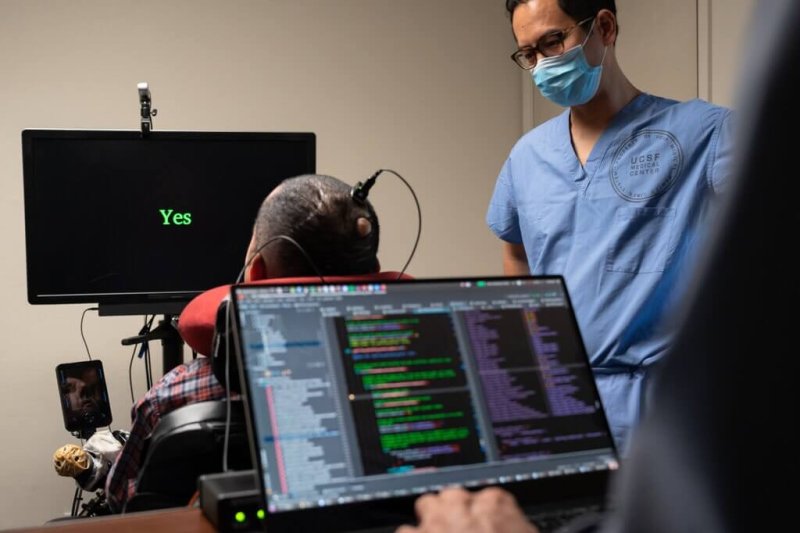He has not been able to speak since 2003, when he was paralyzed at age 20 by a severe stroke after a terrible car crash.
Now, in a scientific milestone, researchers have tapped into the speech areas of his brain — allowing him to produce comprehensible words and sentences simply by trying to say them. When the man, known by his nickname, Pancho, tries to speak, electrodes implanted in his brain transmit signals to a computer that displays his intended words on the screen.
His first recognizable sentence, researchers said, was, “My family is outside.”
In nearly half of the 9,000 times Pancho tried to say single words, the algorithm got it right. When he tried saying sentences written on the screen, it did even better.
By funneling algorithm results through a kind of autocorrect language-prediction system, the computer correctly recognized individual words in the sentences nearly three-quarters of the time and perfectly decoded entire sentences more than half the time.
“To prove that you can decipher speech from the electrical signals in the speech motor area of your brain is groundbreaking,” said [researcher Dr. Melanie] Fried-Oken.































